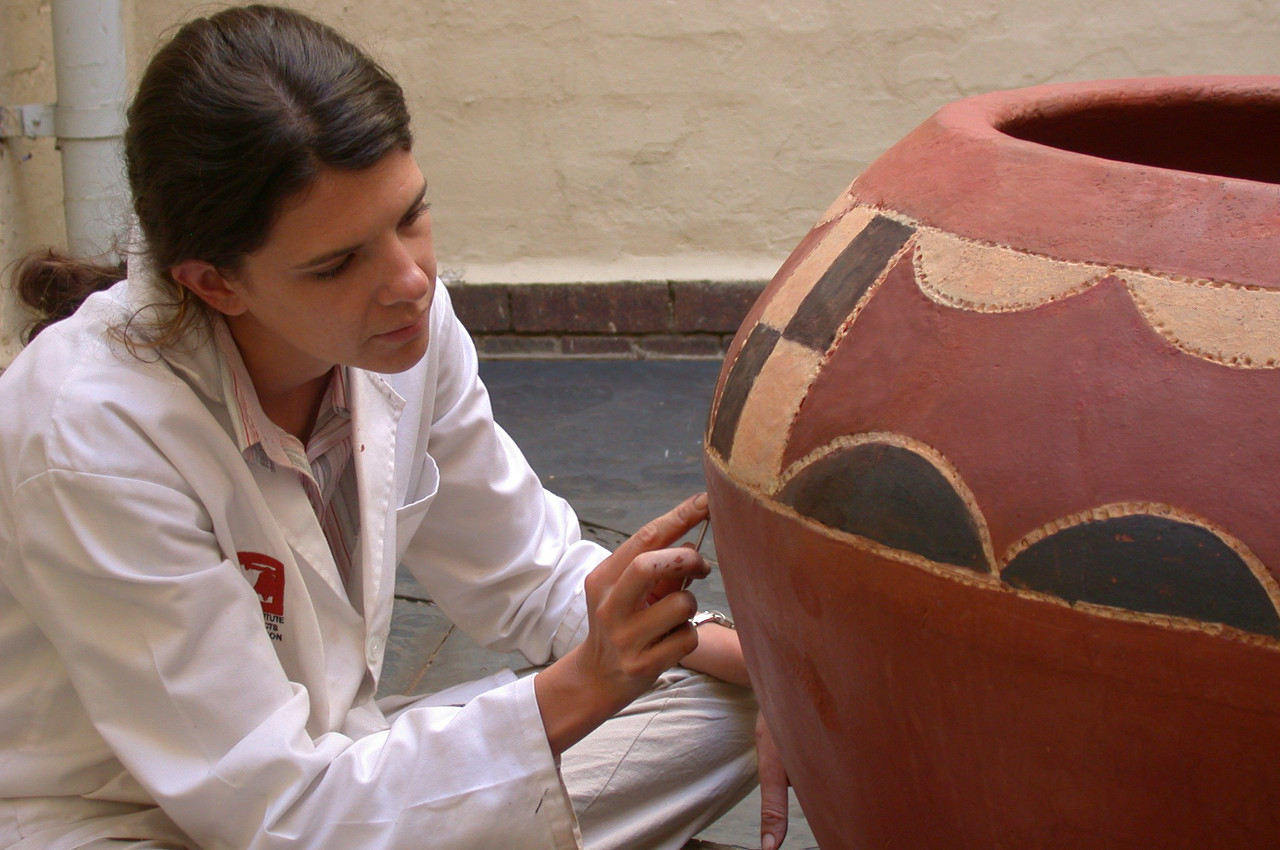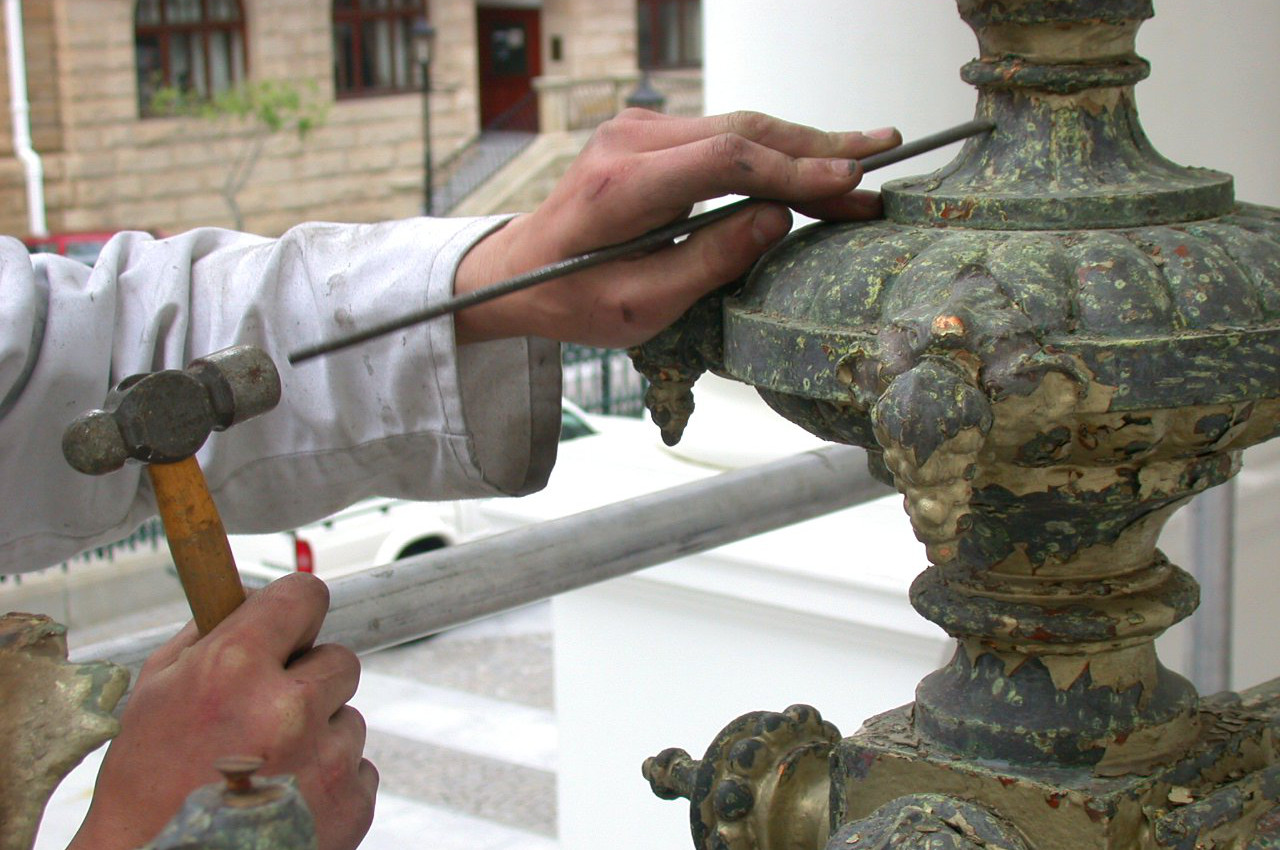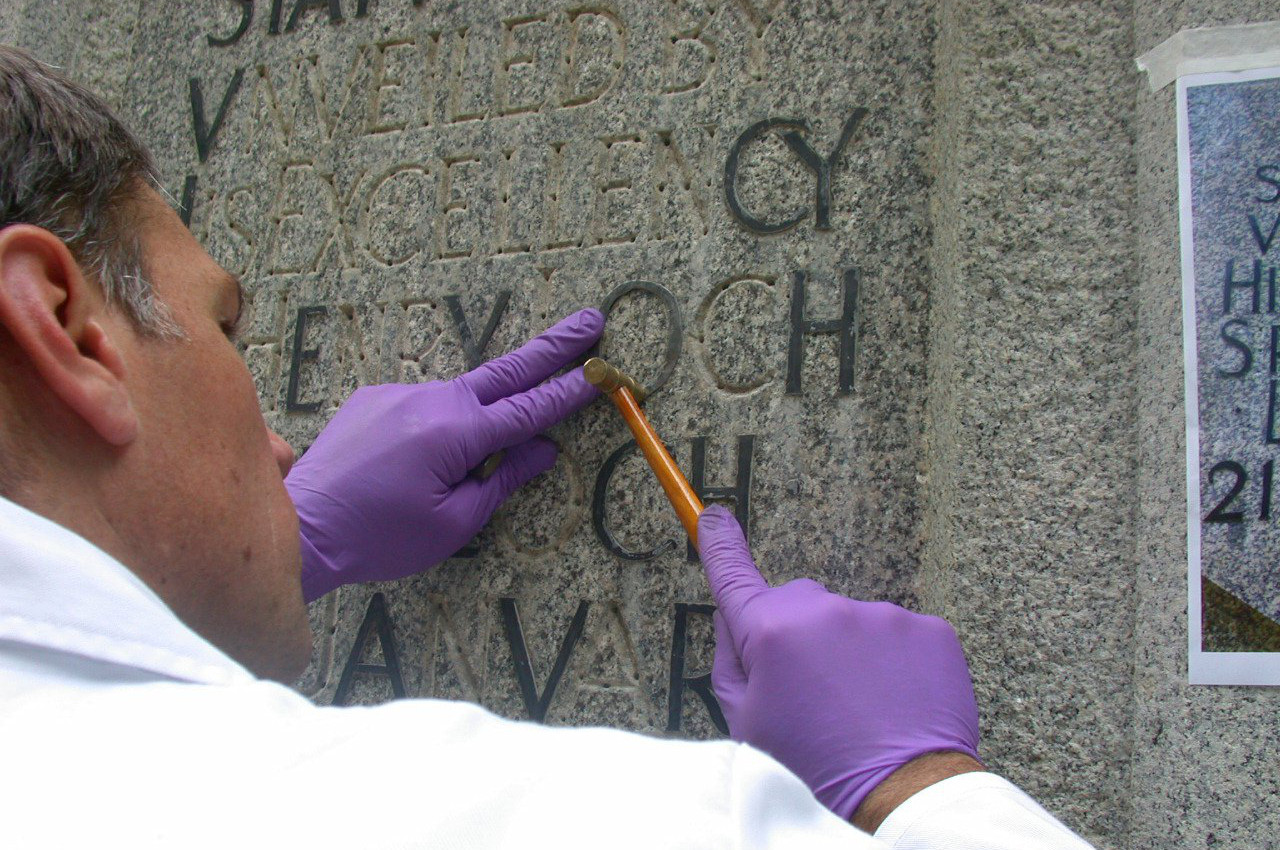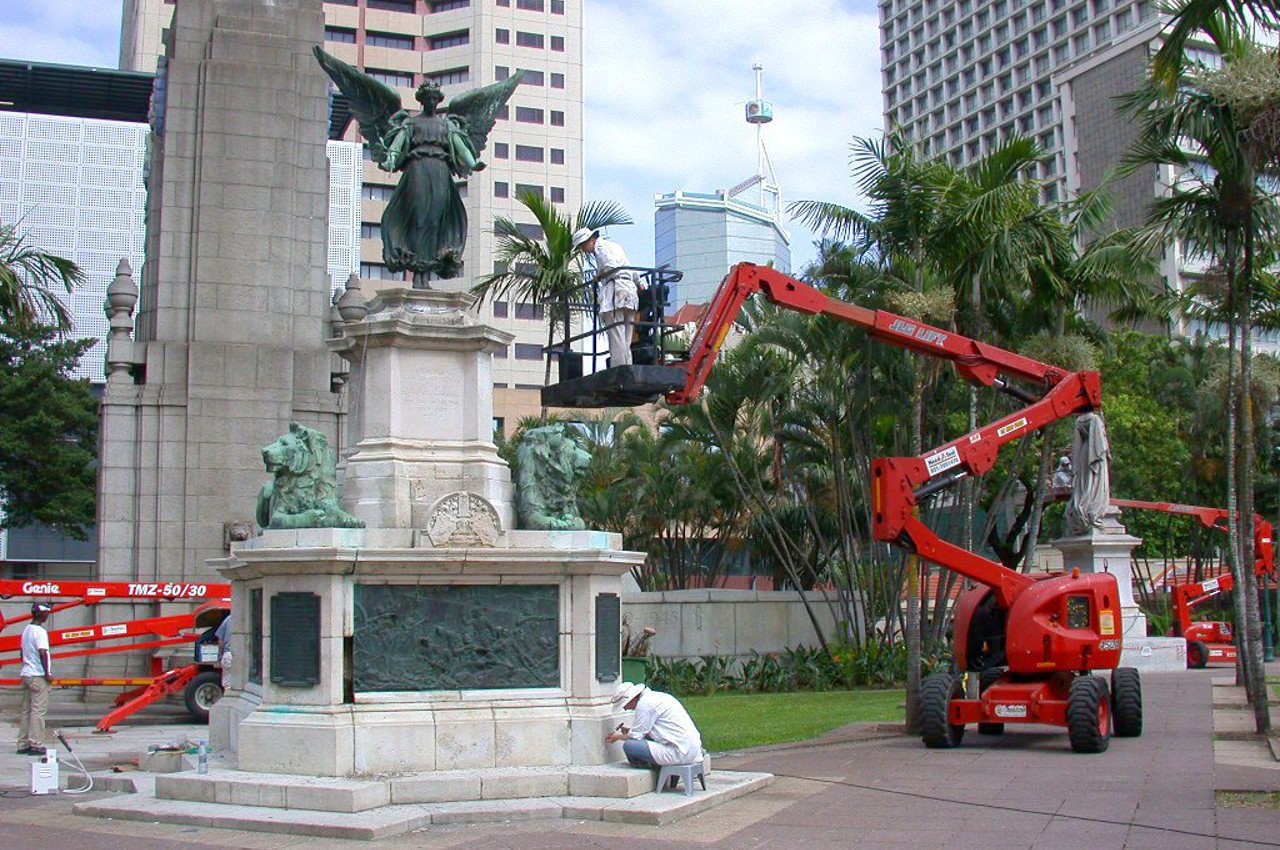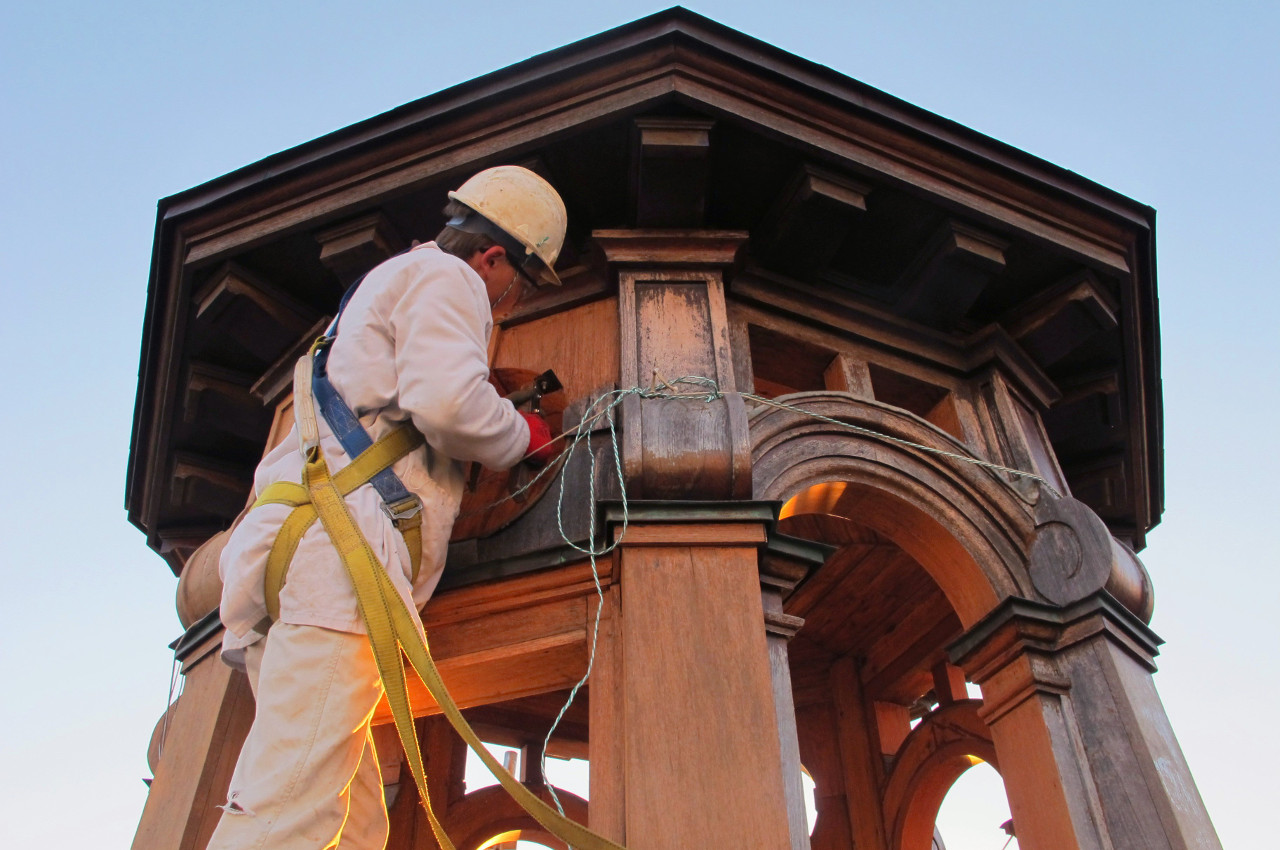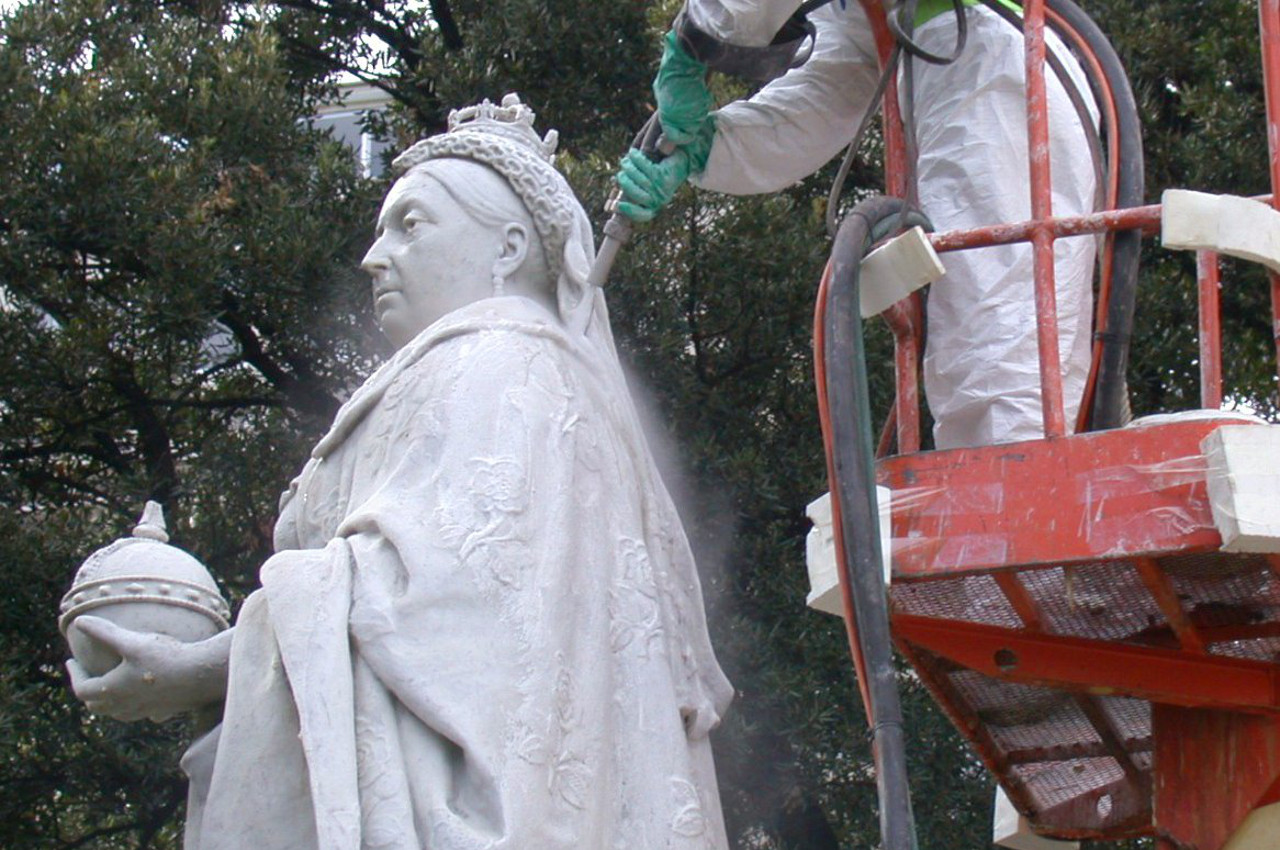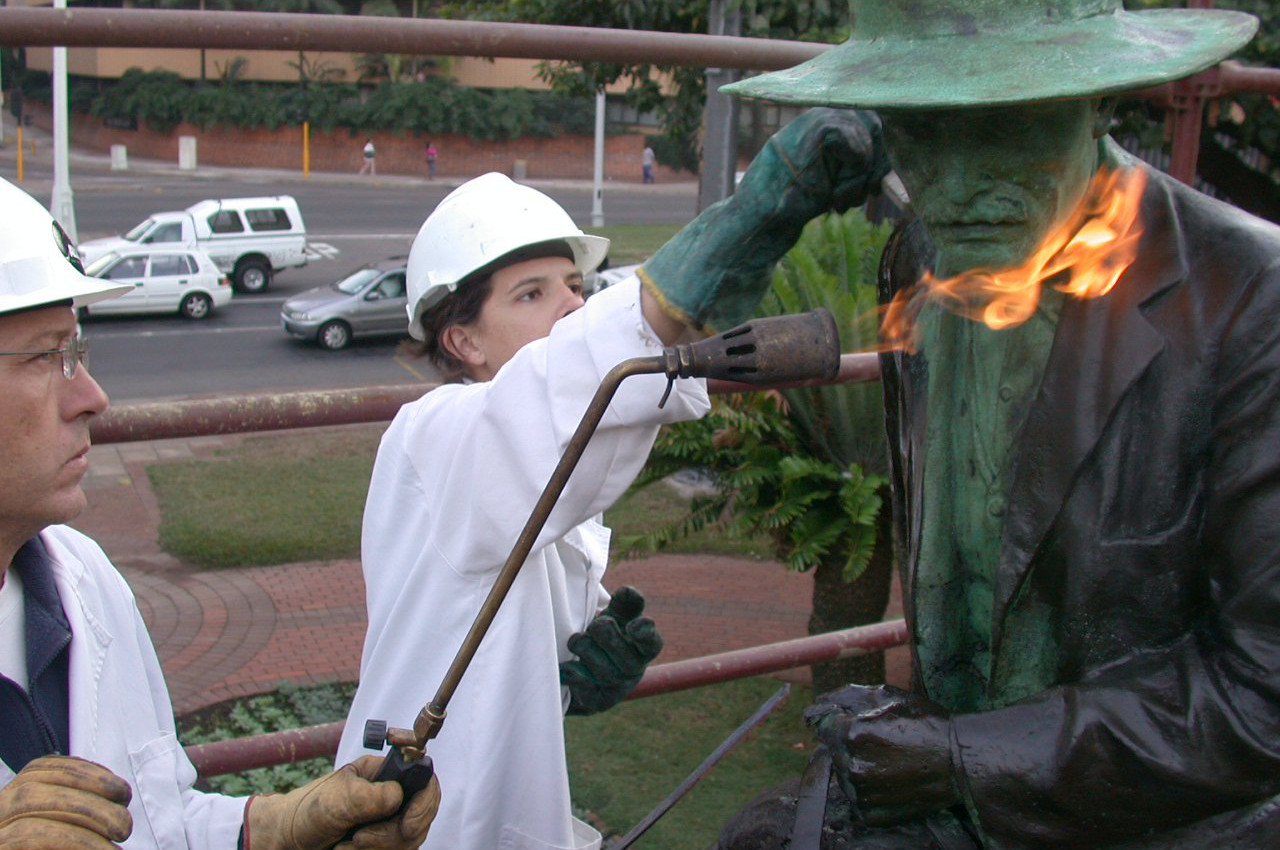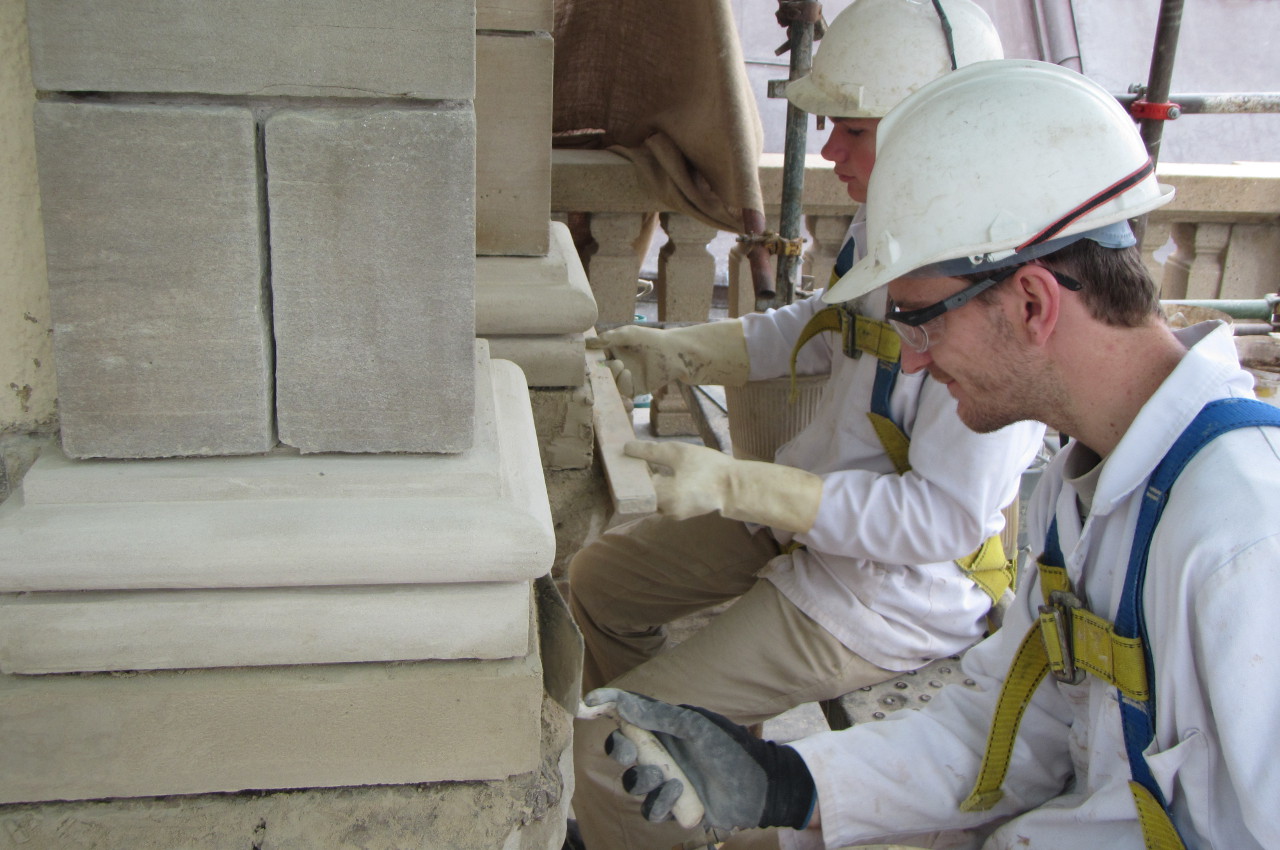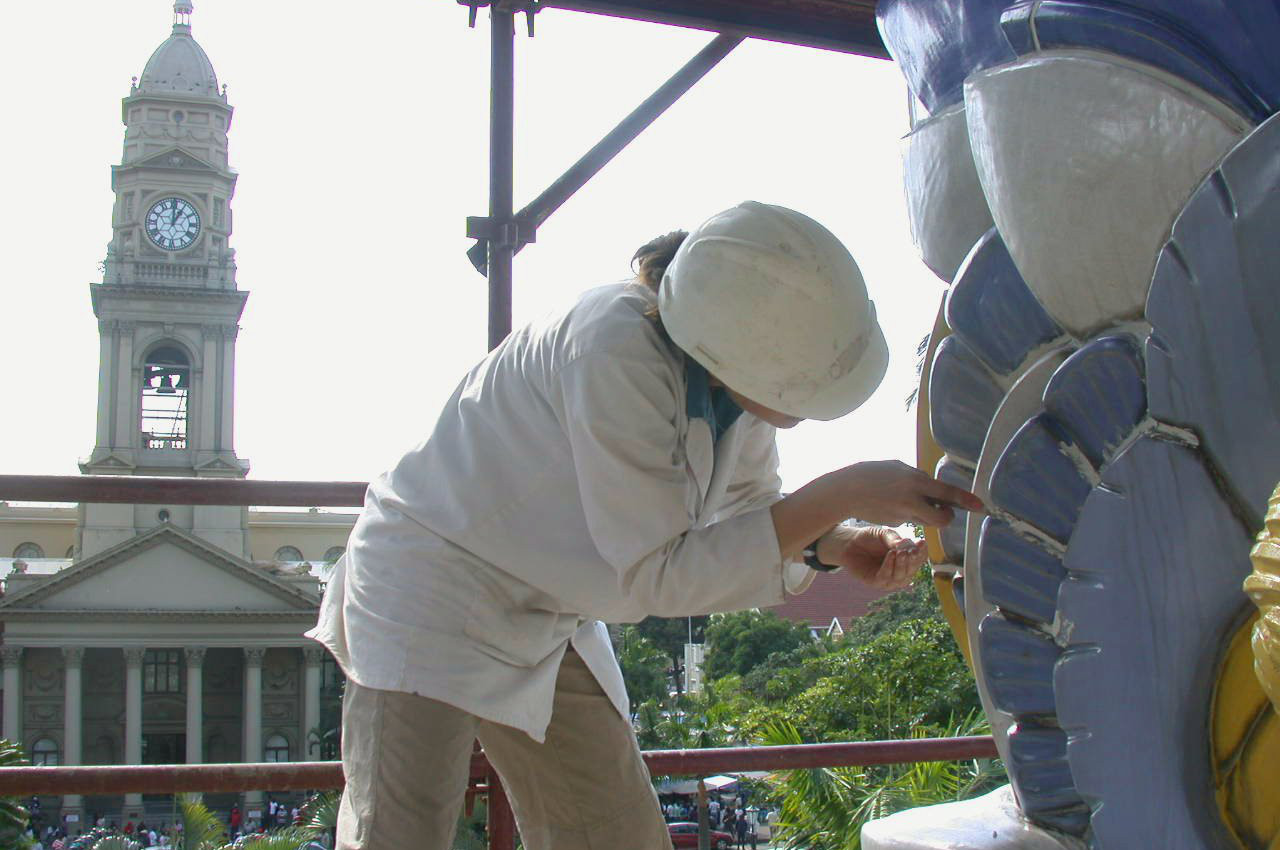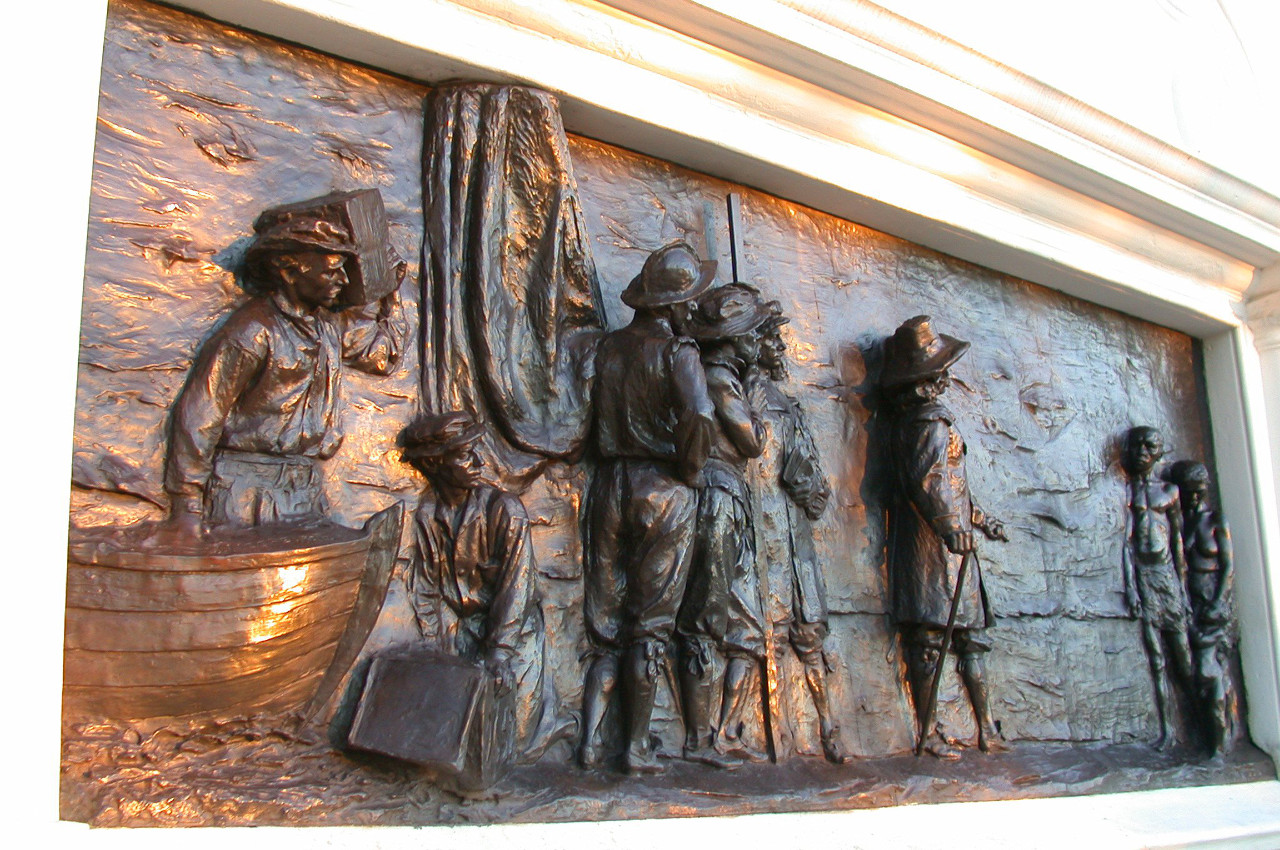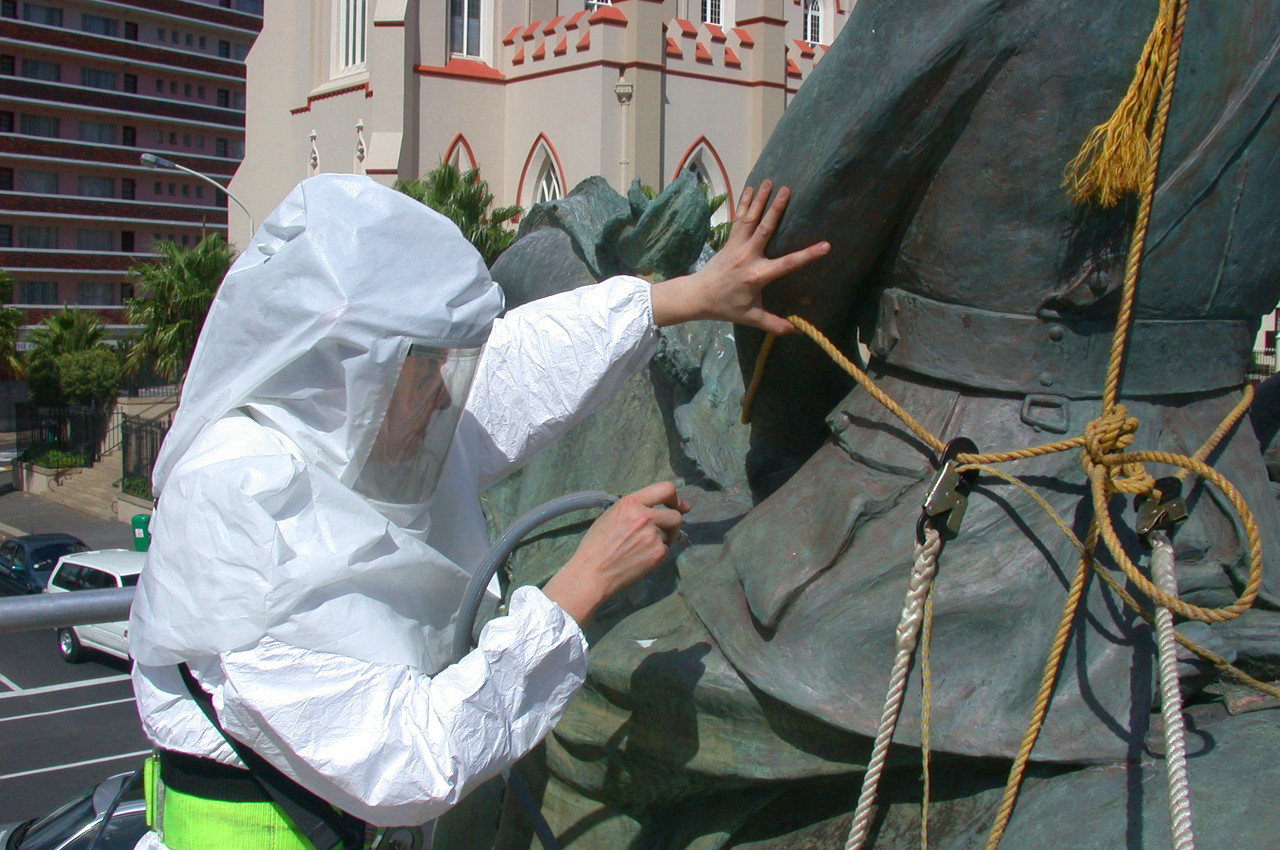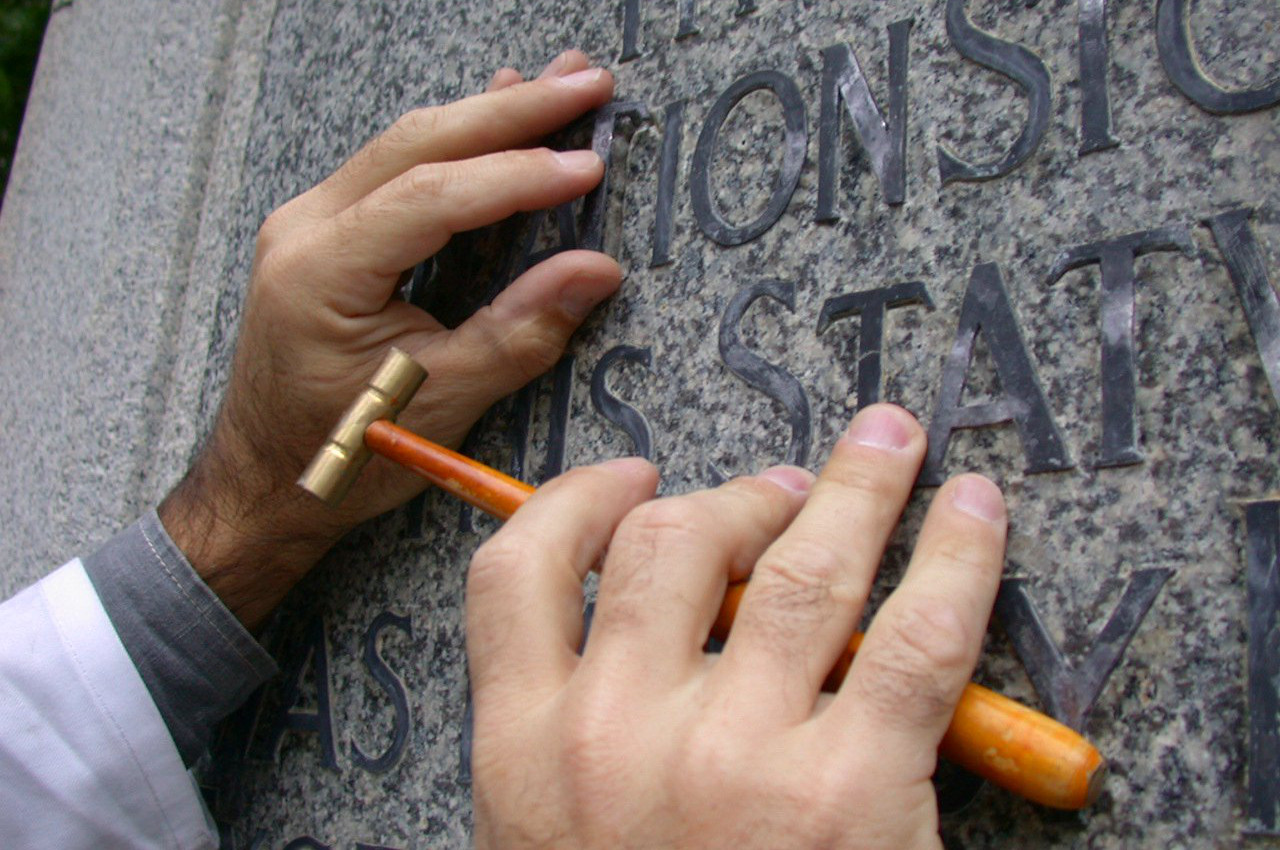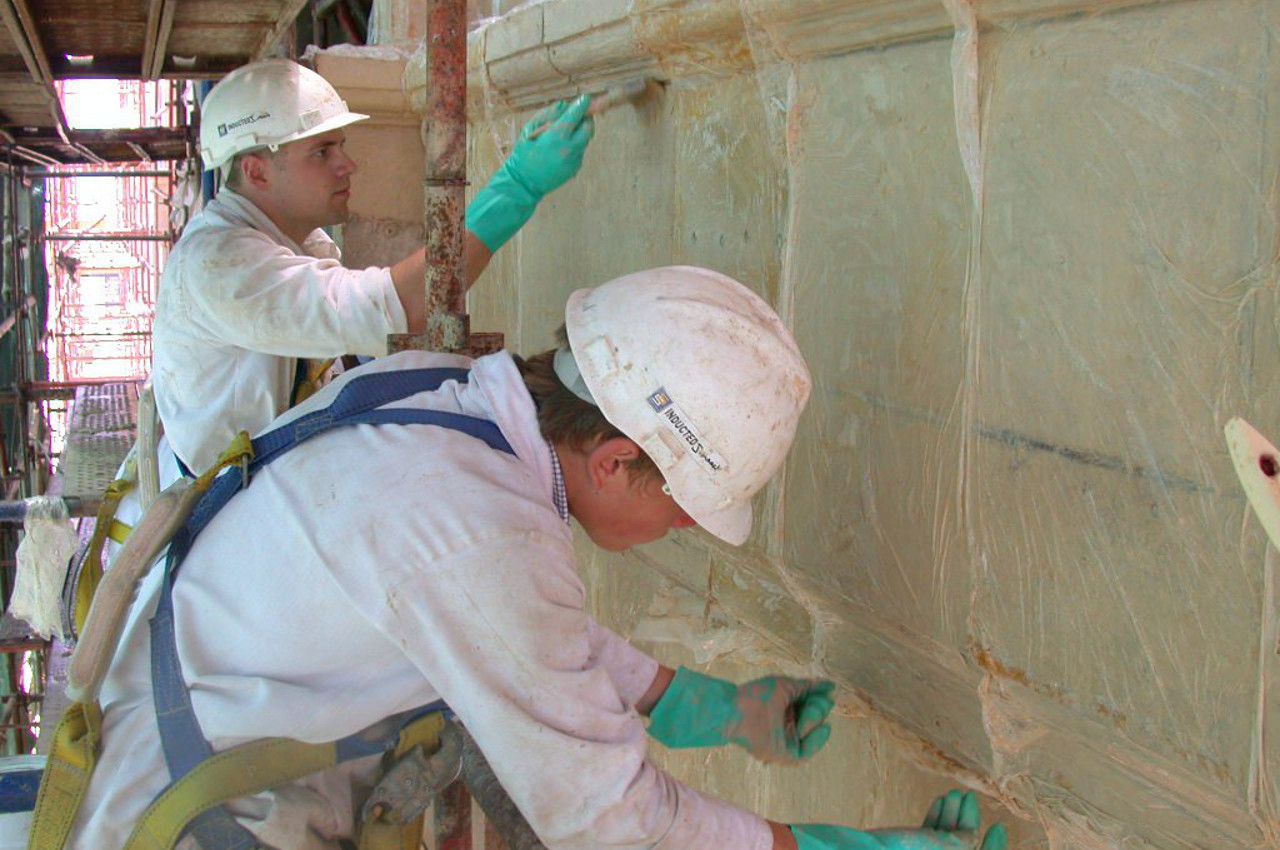Remedial Conservation
When engaging with the inherent challenges of historical sandstone structures, decorative bronzes, terrazzo, iron, timber, marble, ceramic mosaics, granite or traditional mortars, the prevailing scarcity of traditional artisan’s skills, and a wide spread lack of specialized conservation proficiency, frequently jeopardize the success, integrity and aesthetic results of such a project. The Institute, by way of its field unit, The Heritage Conservation Group, possesses the expertise and facility to act as a specialized sub contractor, undertaking technical conservation treatments countrywide.
On sandstone, conservation services can be deployed to consolidate granulating stone, to stabilize laminar exfoliation, to re-instate lost portions, to provide breathable, mineral-based weather shielding, algaecidal treatments, to remove paint layers and/or black sulfite staining, to repair rust jacking and oxide stains, and similar.
Typically, outdoor bronzes require the stabilization of deleterious chlorides, the maintenance of protective, microcrystalline coats, the casting and replacement of missing portions, hot patination treatments, etcetera. In turn, other metals such as iron (forged or cast), lead (monumental lettering and elsewhere) or brass, each poses unique challenges.
Marble objects and surfaces may invite specialized vortex cleaning, or chemical poultices to remove sulfite or oxide stains, algeacidal treatment, polishing and waxing, or the sculpting and replacement of missing portions.
In the case of granite, both laminar exfoliation and iron oxide discolouration are common. Graffiti may also be present, grouting may have been lost or repairs may be needed to damaged or lost portions.
Historic brick and mortars (hydraulic or otherwise) cold stone, mosaics and similar ceramics, encaustic surfaces, terrazzo and many such round out the rich range of architectural components that invites the expertise of conservators...
